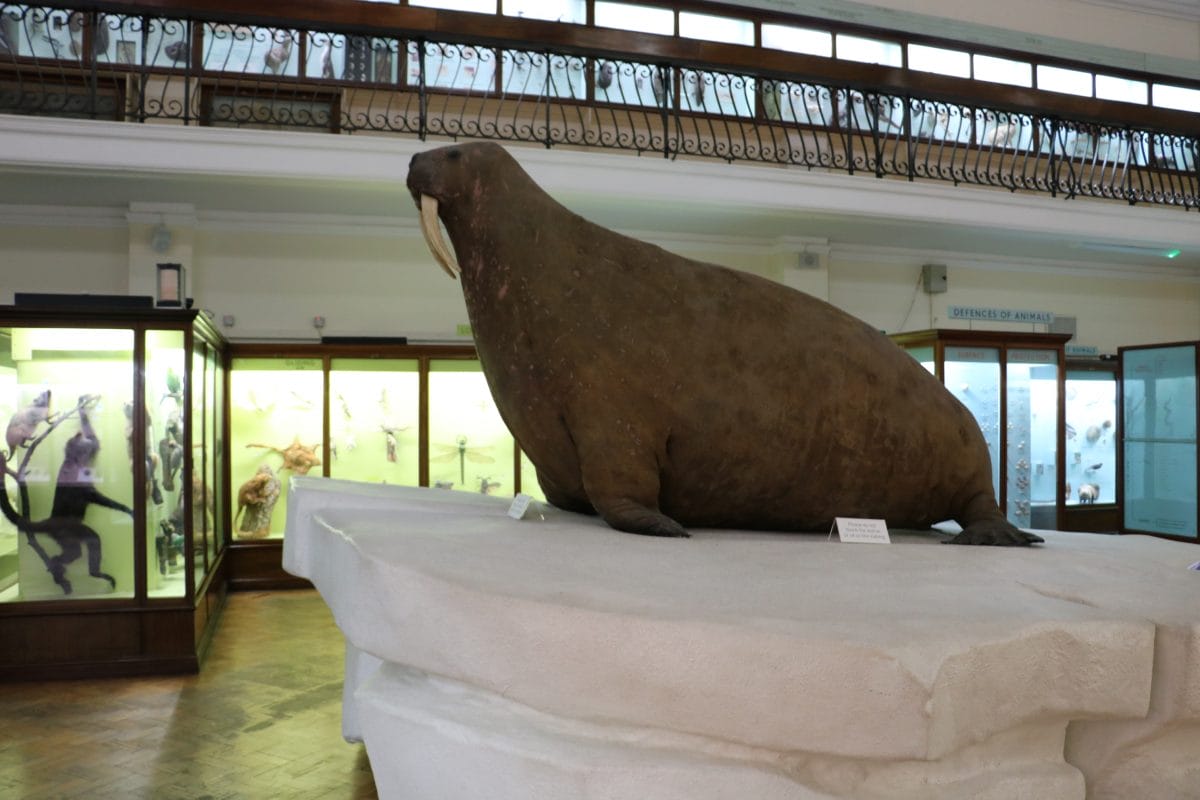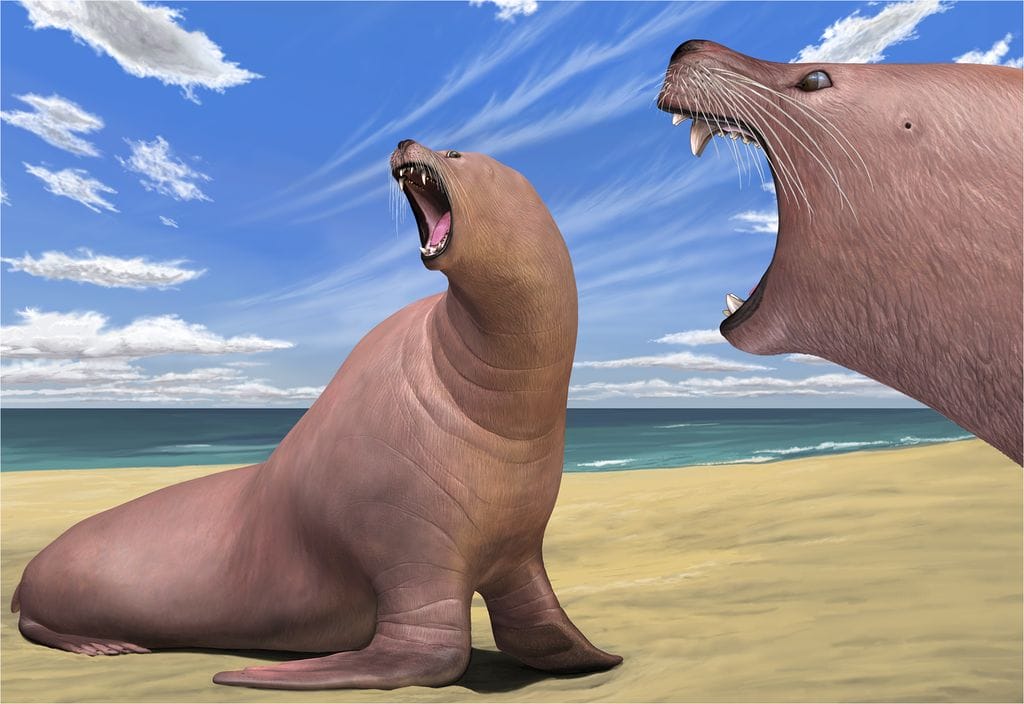What is a walrus?
A walrus is an enormous, blubbery sea mammal from the family of pinnipeds, which are flipper-footed creatures including seals and sea lions. They are terrestrial, meaning they can swim and travel on land.

Where do walruses live?
Walruses live in the water but they are also happy on land for long periods of time. They love cold seas, and live in the artic regions of the Atlantic and Pacific oceans, where their blubber comes in handy to keep them warm. They also have special air sacs in their neck that inflate to help them float.
There are two main subspecies of walrus – the Atlantic and the Pacific walrus, which occupy different territories in the Arctic. The Atlantic walrus can be found in the icy northern waters of Norway, Russia, Canada and Greenland. Meanwhile the Pacific walrus, which tends to be slightly larger and more migratory in nature, can be found in the Arctic around Russia and Alaska.
The walrus at the Horniman was collected in Hudson Bay, Canada, and is an Atlantic walrus.
Do walruses migrate?
Although some walruses do migrate, it isn’t a regular part of their behaviour as a species.
Pacific walruses are more likely to migrate than their Atlantic counterparts, and they spend winter in the south Bering Sea. For the summer, they move northwards, and pass the warmer months in the Chukchi Sea, between Russia and Alaska. It is on this journey that Pacific walrus calves are born.
Walruses migrate primarily by swimming, but they have been known to ride ice floes.

What do walruses eat?
Walruses are carnivores, meaning they eat other animals. They feed off the bottom of the seabed, eating clams, sea cucumbers, worms, soft shell crabs, shrimp, snails, and molluscs. Their mouths are vacuum-like, allowing them to hoover up any morsels they can find. They don’t tend to drink seawater because it is too salty. Instead, walruses extract their liquids from the foods they eat.
Have you ever noticed the spiny-looking moustache on a walrus’s face? These whiskers, known as mystacial vibrissae, help walruses dig through the sand on the ocean floor to forage for food.
Walruses prefer to find food in the shallows, so are rarely spotted in deep waters.
Their pups are sometimes hunted by polar bears and killer whales, although in the past, poaching by humans has been a bigger problem for the global population. Walruses are now protected under US and Canadian laws, but limited hunting by some Inuit peoples is permitted. These days, the climate and ecological emergency poses the greatest threat to walrus numbers worldwide.
How big is a walrus?
Typically, a walrus can grow to between 7.25 to 11.5 feet long and weigh up to one and a half tonnes. They live to around 40 years old and their tusks, which they use for fighting, breaking ice and hauling themselves out of the sea, can grow up to a metre long.

What is it like to be a walrus?
Walruses live in large colonies, or herds, of over 100 members and are very sociable, noisy creatures. They often bellow, snort and click at one another. During mating season the males can become very aggressive and fight each other for dominance.
A walrus pregnancy lasts quite a long time, between 15-16 months. When the offspring are finally born, female walruses are protective of their young and, if a calf is threatened, the mother will clutch it in her flippers and dive into the water.
How do walruses hear?
Although you can’t see their ears, walruses have very good hearing. Research suggests walruses might be able to hear sounds up to a mile away, and they listen out for noises both on land and while they are swimming.
Their ears are located just behind their eyes, and look like small holes in their skin. They don’t have any external ear flaps, so the ears would be hard to spot if you didn’t know they were there.

How fast is a walrus?
From looking at it, you might not think a walrus was able to move very fast. But these sea mammals are strong, fast swimmers. At a regular pace, they swim at around 4.3mph, which is faster than a human walking pace, around 3mph.
But walruses are also capable of sharp bursts of faster swimming, and can reach speeds of up to 21.7mph, which is similar to a professional athlete’s sprint pace for humans.
Walruses are also pretty fast movers on land. Like dogs, they use all four flippers to run, and can match a human in pace.
How many walruses are left?
As with so many Arctic species, as the seas warm, their way of life comes under threat. In the wild, there are thought to be around 200,000 Pacific walrus left and 25,000 Atlantic walruses.
Walruses have been around for a long time, although they didn’t always look the same. Around 10 million years ago, a distant relation of the modern walrus patrolled the shores of what is now Japan. Roughly 10 feet long, this ancient walrus didn’t have tusks, instead making do with large canine teeth.

“File:Archaeodobenus akamatsui.jpg” by Tanaka Y, Kohno N is licensed under CC BY-SA 2.5.
There are some very good fossil records charting the evolution of walruses, which have told us a lot about the evolution of this wonderful species over millions of years.


